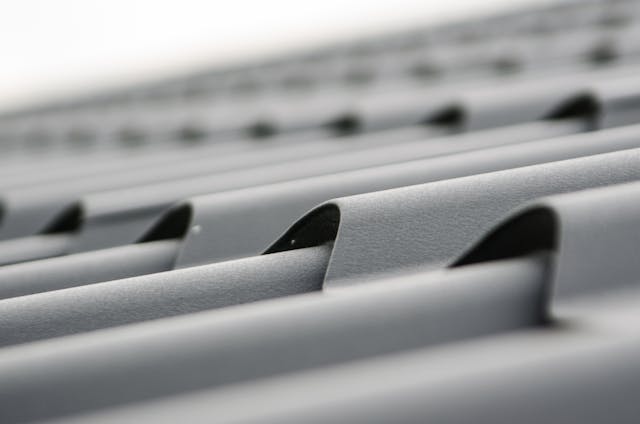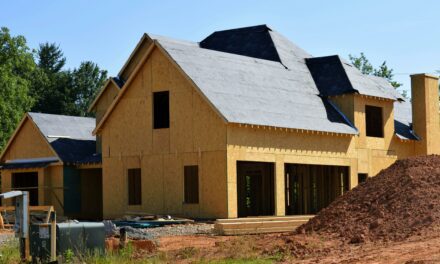Replacing a roof is a significant investment that enhances both the protection and the curb appeal of a home. It’s crucial to consider several key factors before embarking on this substantial home improvement project. From selecting the right materials to choosing a competent contractor, every decision impacts the longevity and performance of the new roof. Understanding these considerations ensures that homeowners make informed choices that align with their needs and budget. This article outlines five essential aspects to contemplate when planning a roof replacement.
1. Material Choices for Longevity and Aesthetics
Selecting the right roofing materials is paramount for both longevity and aesthetic appeal. A black metal roof, for example, not only offers a sleek, modern look but also boasts durability against harsh weather conditions. Metal roofs are known for their ability to reflect solar radiant heat, which can reduce cooling costs by up to 25%. Furthermore, they are lightweight, which helps preserve the integrity of a building’s structure. Unlike asphalt shingles, metal roofing can last up to 50 years or more with minimal maintenance, making it an excellent investment for long-term homeownership. Additionally, metal roofs are environmentally friendly, often made from recycled materials, and fully recyclable at the end of their life, contributing to sustainable building practices.
2. Understanding Roofing Costs and Budgeting
Understanding the costs involved in roofing and effectively budgeting for them are crucial aspects of any roof replacement project. Roofing costs can vary widely based on material choice, roof size, and geographical location. For instance, asphalt shingles are generally the most cost-effective option, while materials like slate or metal are at the higher end of the price spectrum. Additionally, labor costs can account for a significant portion of the total expense, especially if the existing roof requires extensive preparatory work. Homeowners should also set aside a contingency fund of approximately 10-20% to cover unexpected issues such as structural repairs or weather-related delays, ensuring the project stays within financial bounds without compromising on quality.
3. Choosing the Right Roofing Contractor
Choosing the right roofing contractor is essential to ensure the success of your roof replacement project. It is important to select a contractor with a strong reputation and significant experience in the roofing industry. Checking for licenses and insurance is crucial; these are basic requirements that protect you from liability and ensure a standard of professionalism. Reading online reviews and asking for references can provide insights into the contractor’s reliability and quality of work. Additionally, obtaining detailed quotes from several contractors can help in comparing pricing and understanding the scope of work, enabling homeowners to make informed decisions.
4. Impact of Climate on Roofing Materials
The impact of climate on roofing materials is a critical factor to consider during the selection process. Materials must be suited to the local weather to ensure longevity and performance. For instance, in areas with high heat and sun exposure, materials like clay tiles or specially coated metal roofs are preferable for their ability to reflect heat. Conversely, in regions prone to heavy snowfall, a sturdier structure such as slate or reinforced metal can help bear the weight and prevent damage. Humid climates might necessitate roofing materials like cedar wood shakes, which naturally resist moisture and decay.
5. Warranty and Maintenance Considerations
Warranty and maintenance are pivotal aspects of any roofing investment. Warranties vary significantly by material type and manufacturer, with some offering up to 50 years of coverage. It is essential to understand what is included in a warranty, such as coverage for materials defects or labor. Regular maintenance also plays a crucial role in extending the life of a roof. This includes routine inspections, prompt repair of minor damages, and periodic cleaning to prevent debris buildup. Homeowners should ensure that maintenance practices align with warranty requirements to avoid voiding the coverage. Knowing these factors helps in maintaining a roof’s integrity and ensuring long-term protection for the home.
Next Steps in Your Roof Replacement Journey
Embarking on a roof replacement journey equips a home with enhanced durability and aesthetic appeal. It’s vital to approach this project with careful planning and consideration of all aspects discussed. Selecting the right materials, understanding costs, choosing a reliable contractor, considering the climate, and knowing the warranty details can significantly affect the outcome. Homeowners who take these steps can feel confident in their investment, knowing their home is well protected. With the right decisions, a new roof is not just a necessity but a long-term enhancement to any property.











